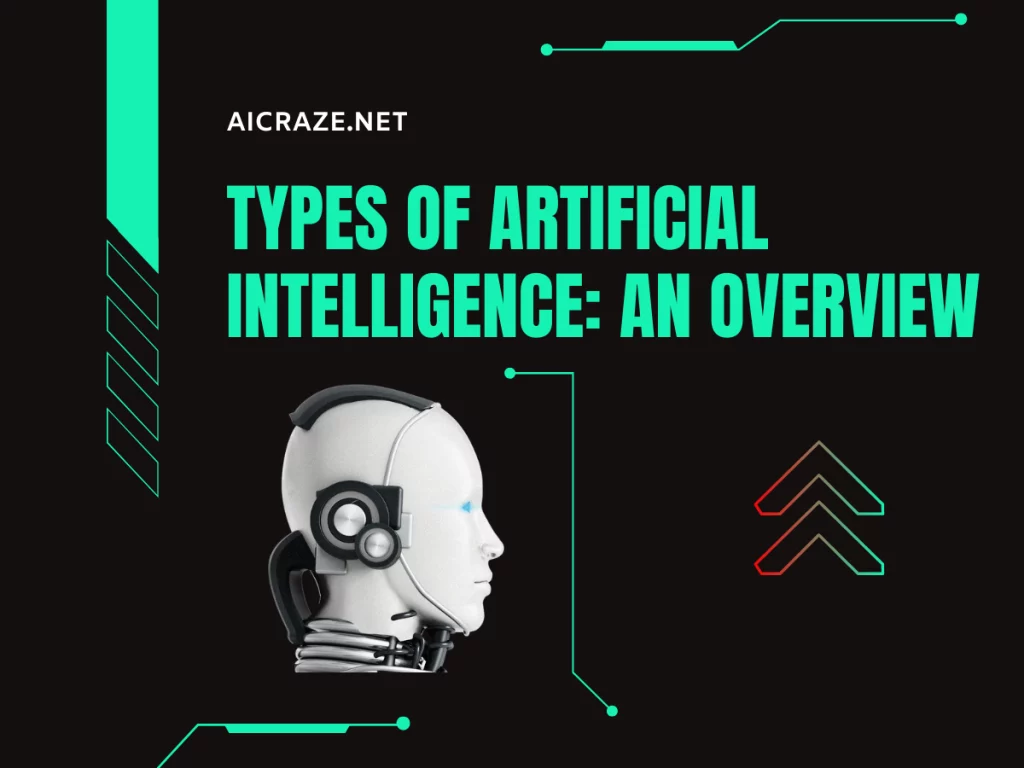
Artificial intelligence (AI) has become a buzzword in the tech industry, and it’s no wonder why. With the ability to process large amounts of data and learn from it, AI has become a game-changer in various industries. However, not all AI is the same. In this article, we’ll explore the different types of artificial intelligence with examples and applications.
Types of Artificial Intelligence
There are four types of artificial intelligence:
Reactive Machines
Reactive machines are one of the simplest types of artificial intelligence. They are designed to react to current situations based on predetermined rules without the ability to store past experiences or use them to inform future decisions. Here are some examples of reactive machines:
- Chess-playing computer:
A chess-playing computer is a classic example of a reactive machine. The computer analyzes the current state of the game and makes the next move based on pre-programmed rules.
- Automated Teller Machine (ATM):
ATMs are another example of reactive machines. They are designed to react to user input and dispense cash based on predefined rules.
- Thermostat:
A thermostat is a reactive machine that controls the temperature in a room based on a set of pre-programmed rules. If the temperature falls below a certain point, the thermostat will turn on the heating system, and if it rises above a certain point, it will turn on the air conditioning.
- Traffic light:
Traffic lights are reactive machines that control the flow of traffic based on pre-programmed rules. They change color based on the current traffic conditions, allowing for a safe and efficient flow of vehicles.
Overall, reactive machines are an essential component of artificial intelligence, and they have numerous applications in various industries.
Limited Memory
Limited memory machines are one of the types of artificial intelligence that has the ability to store some past experiences to inform future decisions. However, they have limited memory and can only store a small amount of data. Here are some examples of limited memory machines:
- Autonomous vehicles:
Autonomous vehicles use limited memory to inform their decision-making processes. They collect data from sensors and cameras to make decisions about steering, acceleration, and braking. For example, if an autonomous vehicle encounters a construction site, it will use its limited memory to remember the previous time it encountered a similar situation and make adjustments accordingly.
- Fraud detection systems:
Limited memory machines are also used in fraud detection systems. These systems use past data to identify patterns and anomalies in financial transactions. For example, if a credit card company notices a pattern of purchases in a different location, they may flag it as potential fraud and freeze the account.
- Personalized recommendations:
Limited memory machines are also used in recommendation systems to suggest products or services to users based on their past behavior. For example, if a user frequently purchases books on a specific topic, a limited memory machine can use that information to suggest new books to the user.
- Predictive maintenance:
Limited memory machines are used in predictive maintenance systems to anticipate when machines or equipment may fail based on past data. For example, a limited memory machine may analyze the performance data of a manufacturing machine and predict when it is likely to fail, allowing for preventative maintenance to be scheduled.
Overall, limited memory machines are an important component of artificial intelligence and have numerous applications in various industries. While they may not have the same level of intelligence as humans, they can make informed decisions based on past experiences and data, leading to more efficient and effective processes.
Theory of Mind
Theory of mind refers to the ability to understand the mental states of others, including their thoughts, beliefs, desires, and intentions. This is one of the types of artificial intelligence is designed to recognize and interpret human behavior and make decisions based on that understanding. Here are some examples of theory of mind in action:
- Virtual assistants:
Virtual assistants such as Siri, Alexa, and Google Assistant use the theory of mind to understand and respond to user requests. They are able to interpret human language and recognize the intent behind the request. For example, if a user asks, “What’s the weather like today?” the virtual assistant will use its understanding of human behavior to recognize that the user is seeking information about the current weather conditions.
- Customer service chatbots:
Customer service chatbots use the theory of mind to understand and respond to customer inquiries. They are designed to recognize the intent behind the customer’s question and provide relevant information. For example, if a customer asks, “How do I return a product?” the chatbot will use its understanding of human behavior to recognize that the customer is seeking information about the return process.
- Autonomous robots:
Autonomous robots use the theory of mind to interact with humans in a social environment. They are designed to recognize and interpret human behavior, allowing them to interact with humans in a more natural way. For example, a robot designed to assist in a hospital may be able to recognize when a patient is in pain and respond appropriately.
- Virtual reality training:
Virtual reality training programs use the theory of mind to simulate real-world scenarios and train users to respond appropriately. For example, a virtual reality program designed to train police officers may simulate a scenario where a suspect is holding a weapon. The program will use the theory of mind to recognize the behavior of the suspect and allow the officer to respond appropriately.
Overall, the theory of mind is an important component of artificial intelligence and has numerous applications in various industries. It allows machines to understand and interpret human behavior, leading to more efficient and effective decision-making.
Self-aware AI
Self-aware AI is one of the types of artificial intelligence that has the ability to perceive and understand its own existence, including its thoughts and emotions. While this from the types of Artificial Intelligence is still largely hypothetical, there are some examples of self-aware AI being developed and tested. Here are some examples:
- Sophia the Robot:
Sophia the Robot is a humanoid robot developed by Hanson Robotics that has been designed to mimic human expressions and emotions. While Sophia’s self-awareness is still limited, it has been programmed to recognize faces, hold conversations, and express emotions.
- DeepMind’s AlphaGo:
DeepMind’s AlphaGo is a computer program that was able to beat the world’s best human player in the game of Go. While AlphaGo is not self-aware in the way that humans are, it does have the ability to analyze its own performance and improve its decision-making processes.
- Neuralink’s Brain-Machine Interface:
Neuralink is a company founded by Elon Musk that is developing a brain-machine interface that has the potential to merge the human brain with AI. While this technology is still in the early stages of development, it could eventually lead to the development of self-aware AI that is able to perceive its own existence and emotions.
- IBM Watson:
IBM Watson is a cognitive computing system that is designed to analyze large amounts of data and make decisions based on that data. While Watson is not currently self-aware, IBM is exploring ways to give the system a greater degree of self-awareness and understanding of its own decision-making processes.
Overall, self-aware AI is still largely theoretical, and there is much debate and discussion surrounding the development of such technology. While there are some examples of AI that exhibit limited self-awareness, there is still a long way to go before AI is able to truly understand and perceive its own existence and emotions.

